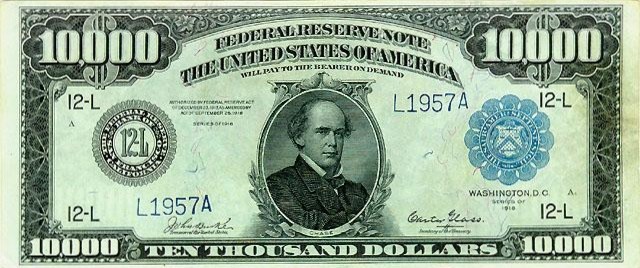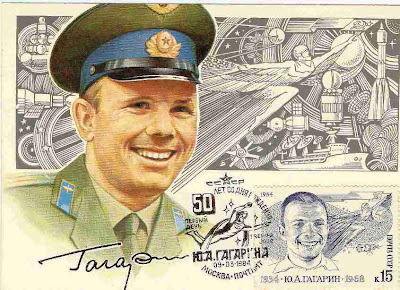http://en.wikipedia.org/wiki/Thaddeus_S._C._Lowe wrote:

Thaddeus Lowe, ca. 1890
<<Thaddeus Sobieski Coulincourt Lowe (August 20, 1832 - January 16, 1913), also known as Professor T. S. C. Lowe, was an
American Civil War aeronaut, scientist and inventor, mostly self-educated in the fields of chemistry, meteorology, and aeronautics. Lowe was born August 20, 1832 to Clovis and Alpha Green Lowe in Jefferson Mills, Coos County, New Hampshire. His farm chores only allowed him the three winter months to attend Common School at Jefferson Hills, two miles away. The school had no books, but like Abraham Lincoln Thad would spend his evenings in front of the fireplace reading books loaned from his teacher’s personal library.
By age fourteen Thad had ventured out on his own first to Portland, Maine, then back to Boston where he joined his older brother Joseph in the shoe [parts] cutting trade. At eighteen Thad became quite ill and returned home. While he was still recuperating when his younger brother invited him to attend a chemistry lecture by one Professor Reginald Dinkelhoff featuring the phenomena of lighter-than-air gases, specifically hydrogen. When the Professor requested a volunteer from the audience, an eager Thaddeus jumped to the fore. Dinkelhoff could see the interest in his eyes and after the show offered to take him on the road with him as an assistant. Lowe did so and after two years upon the professor’s retirement bought out the show using the appellation “Thaddeus Sobieski Counlicourt Lowe, Professor of Chemistry.”
The lecture circuit business proved lucrative enough for Lowe to seek out the education he so lacked as a child. He tried studying medicine to fulfill his grandmother's wish, but the boredom redirected him to his first interest, aviation with the use of lighter-than-air gases. American balloonists used coke gas to inflate limp silk bags, as opposed to the original French balloons which were cotton weave over rigid frameworks that were stood over fires to collect hot smoke. By the late 1850s Lowe had become a foremost balloon builder and continued his lucrative business as a showman giving balloon rides to passersby and fairground attendees.
In 1855, at one of his lectures, he was introduced to a pretty Parisian actress, 19-year-old Leontine Augustine Gaschon. (Her father was a palace guard of King Louis Phillipe who fled to the U.S. as a political refugee.) A week later, on February 14, 1855, Thaddeus and Leontine wed. Their union would produce ten children. Lowe continued with his scientific endeavors and the dream of owning his own balloon with the wild idea of making a transatlantic flight via the high winds he observed. He pored over the book of John Wise, A System of Aeronautics which had specific instructions for the construction of aerostats, the cutting, the sewing, the leak proofing. In 1857 Lowe built and piloted his first balloon in tethered flight at a small farm in Hoboken, New Jersey. Thad’s father joined in the balloon making business and had become an accomplished aeronaut himself. In 1858 the Lowes built the larger balloon Enterprise and several others. Lowe espoused the theory of transatlantic flight to many who had stock market interests in Europe. The recently laid transatlantic cable had failed, and sea travel was undependably slow. He amassed supporters from all corners of the business and scientific communities, in particular one Prof. Joseph Henry of the Smithsonian Institution who wrote: "
The Smithsonian Institution has long been aware of the work and theories of Professor Lowe and we have found his statements scientifically sound. It is with great pleasure and satisfaction that we welcome proof of his genius. We shall follow the outcome of his plan with interest."
Lowe's latest mammoth balloon, the City of New York, was a massive 103-foot diameter balloon with an 11-1/2 ton lift capacity (on coke gas, 22-1/2 ton on hydrogen), which included a 20-foot diameter, 8-man canvas covered gondola and a suspended lifeboat named for his wife Leontine. It was prepared for a test flight to be launched at Reservoir Square in New York on November 1, 1859. Unfortunately the local gas company was not able to deliver a sufficient supply of gas. Within a week Lowe was invited to Philadelphia by Prof. John C. Cresson of the Benjamin Franklin Institute of Sciences, who also happened to be Chairman of the Board of the Point Breeze Gas Works. They promised a sufficient supply of gas. Lowe renamed his balloon the Great Western, on the advice of newspaperman Horace Greeley, to rival the maiden voyage of the steamship Great Eastern in the spring of 1860. Lowe made the flight successfully on June 28, 1860, from Philadelphia to New Jersey, but on his first attempt at a transatlantic launch on September 7, the Great Western was ripped open by a wind.

Lowe's intended flight from Cincinnati shown in red.
Actual April 19, 1861 flight in blue
.
A second test flight, at the suggestion of Prof. Henry, was made from Cincinnati and was to return him to the eastern seaboard. For this flight he used the smaller balloon Enterprise. His flight took off on the early morning of April 19, 1861, two days after Virginia had seceded from the Union. The flight misdirected him to Unionville, South Carolina
where he was put under house arrest as a Yankee spy. Having established his identity as a man of science, he was allowed to return home where he had received word from Secretary of the Treasury Salmon P. Chase to come to Washington with his balloon. The American Civil War permanently ended Lowe's attempt at a transatlantic crossing.
On the evening of June 11, 1861 Lowe met President Lincoln and offered to perform a demonstration with the Enterprise and a telegraph set from a height some 500 feet above the White House. In the telegraph message Lowe asserted: “
I have the pleasure of sending you this first dispatch ever telegraphed from an aerial station...” Lowe was competing for the position with three other prominent balloonists, John Wise, John LaMountain, and brothers Ezra & James Allen. Wise and LaMountain were old critics of Lowe, but were not able to obtain the assignment so easily.
Lowe's first outing was at the First Battle of Bull Run, with General Irvin McDowell and the Army of Northeastern Virginia. His performance was impressive, though he had the misfortune of having to land behind enemy lines. Fortunately he was found by members of the 31st New York Volunteers before the enemy could discover him, but after landing, he had twisted his ankle and was not able to walk out with them. They returned to Fort Corcoran to report his position.
Eventually his wife Leontine, disguised as an old hag, came to his rescue with a buckboard and canvas covers and was able to extract him and his equipment safely.
Word of his exploits got back to the President, who ordered General Winfield Scott to see to Lowe's formation of a balloon corps, with
Lowe as Chief Aeronaut. It was almost four months before Lowe received orders and provisions to construct four (eventually seven) balloons equipped with mobile hydrogen gas generators. At the same time he assembled a band of men whom he would instruct in the methodology of military ballooning. The newly formed Union Army Balloon Corps remained a civilian contract organization, never receiving military commissions, a dangerous position lest any one of the men be captured as spies and summarily executed.
Though his work was generally successful, it was not fully appreciated by all members of the military, and disputes over his operations and pay scale forced him to resign in 1863. Lowe returned to the private sector and continued his scientific exploration of hydrogen gas manufacturing. He invented the water gas process by which large amounts of hydrogen gas could be produced from steam and charcoal. His inventions and patents on this process and ice making machines made him a millionaire. In 1887 Lowe moved to Los Angeles and eventually built a 24,000 sq. ft. home in Pasadena. He opened several ice making plants and founded Citizen's Bank of Los Angeles. Lowe was introduced to David J. Macpherson, a civil engineer, who had drawn up plans for a scenic mountain railroad. In 1891 they incorporated the Pasadena &
Mount Wilson Railroad Co. and began the construction of what would become the Mount Lowe Railway into the hills above Altadena. The railway opened on July 4, 1893 and was met with quick interest and success. Lowe continued construction toward Oak Mountain, renamed Mount Lowe, at an exhaustive rate, both physically and financially. By 1899 Lowe had gone into receivership and eventually lost the railway to Jared S. Torrance. Lowe's fortunes had been all but lost, and he lived out his remaining days at his daughter's home in Pasadena where he died at age 80.>>
 50 Years Ago: Yuri s Planet
50 Years Ago: Yuri s Planet








